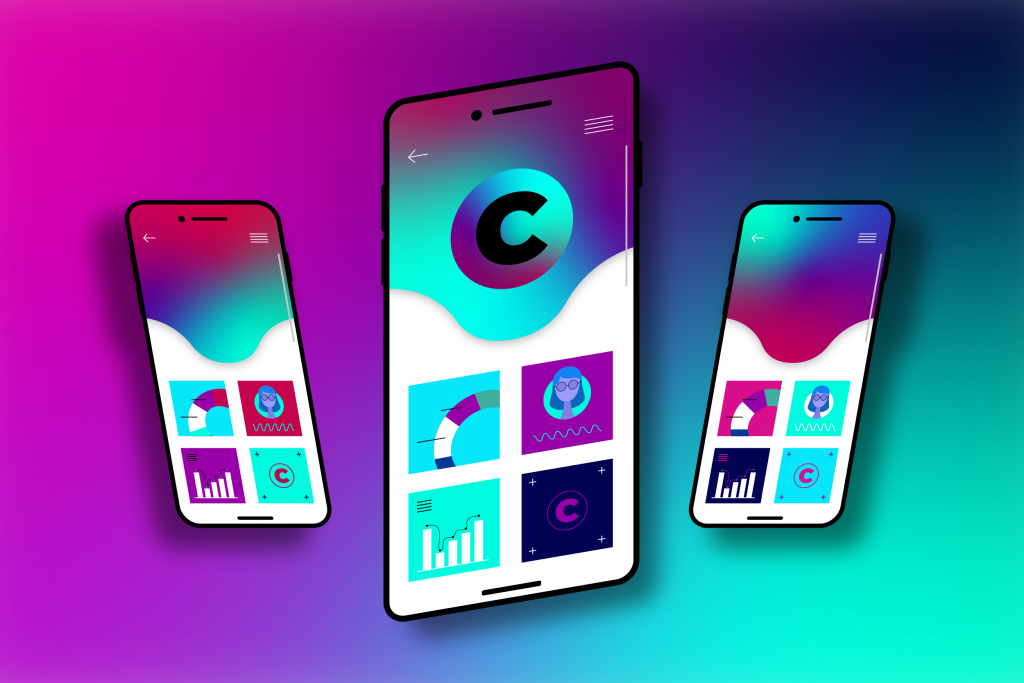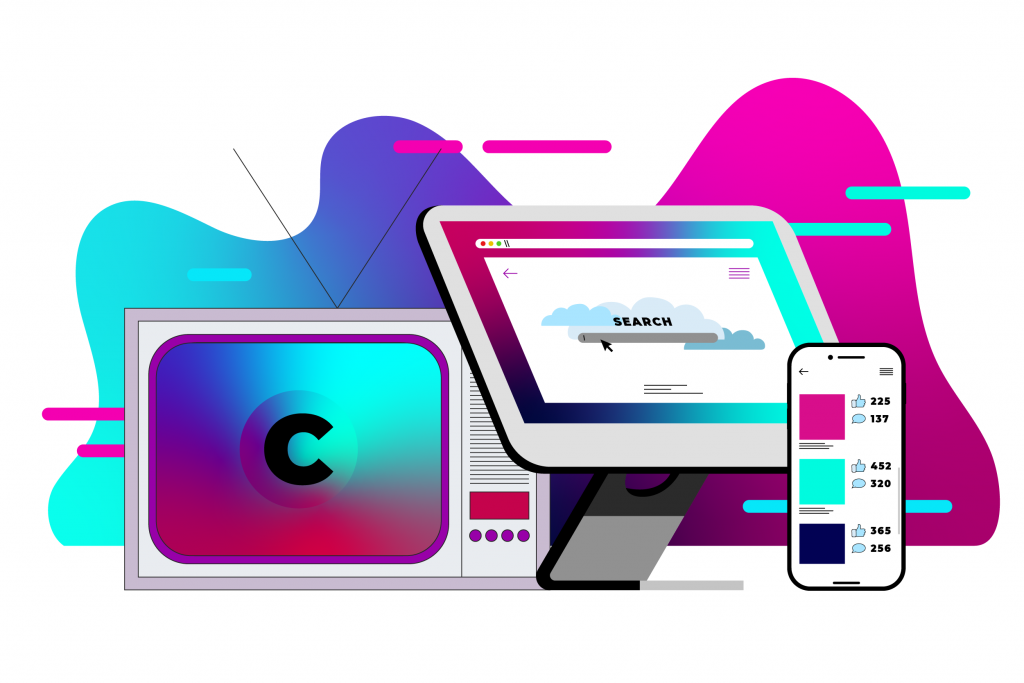The Internet has opened the floodgates for a wide variety of opportunities for businesses of all sizes. According to Internet Live Stats, almost 4.5 billion people—more than half the people on earth—have used the Internet. That number was just 400 million in 2000.
A large share of Internet activity includes the search for products and services. So naturally, you’ll hear of a variety of companies that are perfecting their digital marketing strategies and techniques.
What exactly does that mean, though?

What is Digital Marketing?
Digital marketing encapsulates the marketing of services or products using various online technologies. It benefits business organizations of all sizes by giving them access to the mass market at a reasonable price. Digital marketing leverages the Internet, social media, mobile devices, search engines, and many other channels to reach consumers. It also includes advertising on mobile phones, TVs, and electronic billboards.
Today, instead of being a subtype of traditional marketing, digital marketing is a powerful strategy that brings together customization and mass distribution in order to accomplish various marketing goals. Compared to traditional marketing, digital marketing gives individuals more tools, control, and data to analyze the effectiveness and efficiency of their campaign.
Further, the widespread adoption of smartphones has opened up new ways in which people think about marketing and have pushed the boundaries toward a new concept of digital marketing, which is user-centered, more measurable, interactive and ubiquitous.
Advertising – A Brief History
Over time, advertising has responded to a variety of changes in business demands, cultural context, and technology. Evidence indicates that thousands of years ago, people in different parts of the world, such as ancient Egypt, wrote on papyrus for notices and posters.
Although word-of-mouth advertising has perhaps existed since humans first started to trade products and services, the common types of advertising that we know today developed with the printing press. In the 17th century, paid advertisements first appeared in newspapers, and during the 18th century, newspapers became regional staples, consumed across in Europe and parts of North America.
By the late 19th century, manufacturers started to face increased competition and began understanding the importance of advertising in promoting their products and services, and the first advertising agencies were established.
Advertising agencies that were formerly in the conventional business of selling advertising space in newspapers and some magazines became servants of new national advertisers. They started designing copy and artwork and placing ads in places that were most likely to capture buyer’s attention.
Nothing in the 20th century made a more profound and bigger impact on our culture than the TV. In the 1950s, sponsored TV programs became all the rage, similar to the soap operas on the radio in the 1930s.
Initially, companies sponsored and produced television programs to advertise their products and services. Nowadays, traditional cable television is a bit of a dying breed. Although there is no denying that millions of Americans watch TV every day, more and more individuals in the country are cutting the cord in favor of various online streaming services such as Hulu and Netflix, which don’t always have ads.
Ultimately, the challenge of getting in front of the right buyer at the right time has evolved significantly over the past few decades. As a result, new innovations in digital marketing tactics are required to stay ahead of cultural or technology trends and be effective in driving business goals.

Types of Digital Marketing
Ideally, businesses should use a combination of different types of digital marketing to reach their audience through multiple channels—although some channels work better than others depending on the type of business.
Search Engine Marketing
Search Engine Marketing (also known as SEM) is used by businesses to get traffic from search engines, such as Google, Yahoo, and Bing.
SEM helps increase the visibility of websites by offering businesses the option to pay for specific keywords and searches that drive traffic to their webpages. Since search engines typically display paid search results above organic results on their search engine results pages, this can be extremely effective for capturing a potential customer’s attention.
Content Marketing
Content marketing uses storytelling to increase brand awareness with the objective of getting the target audience to take action. These actions might include signing up for an email list, requesting further information, or making a purchase. In a broad sense, content marketing is often a part of every other digital marketing activity that businesses undertake, be it email marketing or social media marketing.
Content is not limited to blog posts and web pages; it can also include online digital experiences, social media posts, videos, and even webinars. Content marketing aims to create and foster relationships with prospective customers by providing information and building brand trust.
Email Marketing
Email marketing allows you to easily update your email subscribers on a frequent basis about your company. This helps foster a relationship, unlike any of the other kinds of digital marketing.
By providing value and information with your email updates, you can easily build trust with your audience and eventually, you will be in a position to turn a specific percentage of your audience into customers.
While email marketing is one of the oldest types of digital marketing, it can still be relevant and successful if executed properly. There are several things that often contribute to the success of an email marketing strategy, including the content you create and the time you send your messages.
Search Engine Optimization (SEO)
SEO marketing is the process of growing your online visibility in organic (non-paid) search engine results by carefully optimizing your content and website.
If you do SEO right, you can easily attract considerable organic traffic to your website. You can use several methods to rank high on results pages, like building a suitable mix of outbound and inbound links or optimizing your content for specific keywords.
Social Media Marketing
Social media marketing involves the use of various social media platforms to promote a service or product. This type of digital marketing allows you to connect with your current and potential consumers in a more intimate way. Also, keep in mind that social media marketing is more than simply creating social posts for various channels and responding to comments; it offers an opportunity for a brand to further engage with their audiences and build awareness at scale.
Examples of Successful Digital Marketing Campaigns
IHOP‘s Rebranding
On June 4, 2018, The International House of Pancakes announced on Twitter that it was changing its official name to IHOb, leaving the new full name a mystery. Followers immediately weighed in on the various possible meanings of the letter “b.” The company announcement picked up a lot of momentum based on this sudden announcement and the mystery (though admittedly, much of it came from more skeptical social media fans). A few days later, the company formally announced the “b” in the name stood for “burgers.”
In the weeks following, IHOP confirmed that burger sales had quadrupled after the stunt went live. Additionally, in the first 10 days following the “re-branding,” there were over 2.1 million social media conversations about IHOb.
Nike Inspires
This Nike advertisement starring former NFL quarterback Colin Kaepernick won the award for outstanding commercial at the Creative Arts Emmys. The video is filled with inspirational stories of many athletes who managed to defy all obstacles and shattered expectations. With this campaign, Nike gained about 170,000 Instagram followers and more than 27.4 million views on YouTube.
Of course, there were videos online of individuals burning their Nike apparel and swearing off any more purchases because of the company’s association with Kaepernick. A Colorado sporting goods store even stopped selling Nike merchandise (before it eventually closed).
In the end, though, Nike blew past its expectations in the months following the release of the ad. Sales rose, stock climbed, and the company continued its partnership with Kaepernick.
ASOS’s Social Engagement
ASOS created a social campaign urging customers to post images of themselves wearing ASOS outfits, marked by the hashtag #AsSeenOnMe.
Rather than pushing a specific product, this campaign showcased a range of items and promoted the brand’s key message. People were in sportswear and formal wear as well as dresses and jeans, highlighting the diversity and variety of ASOS’s offering.
ASOS’s #AsSeenOnMe campaign is an excellent example of a brand leveraging user-generated content on social media.



